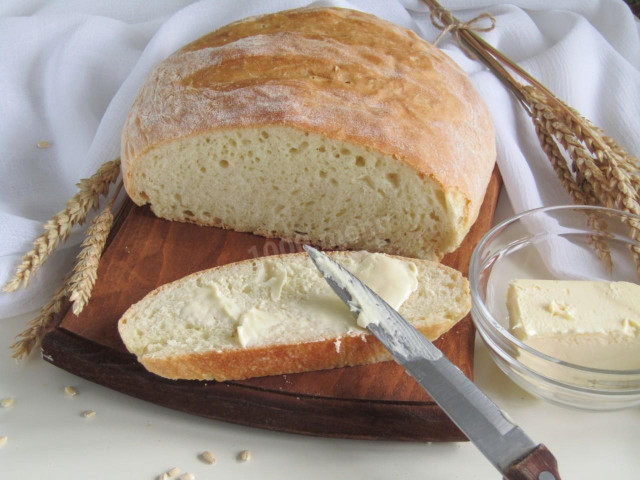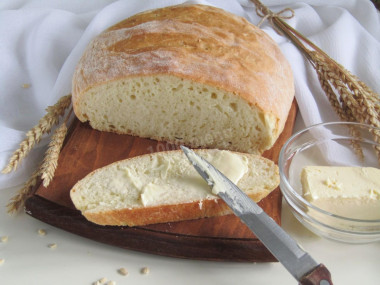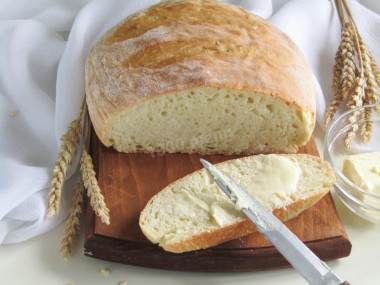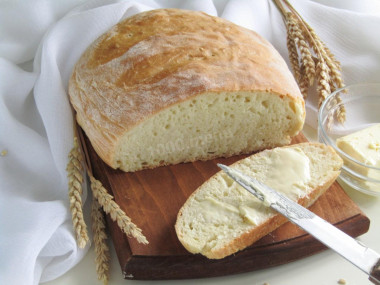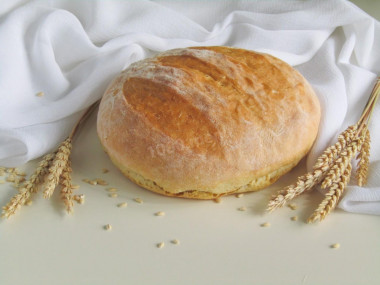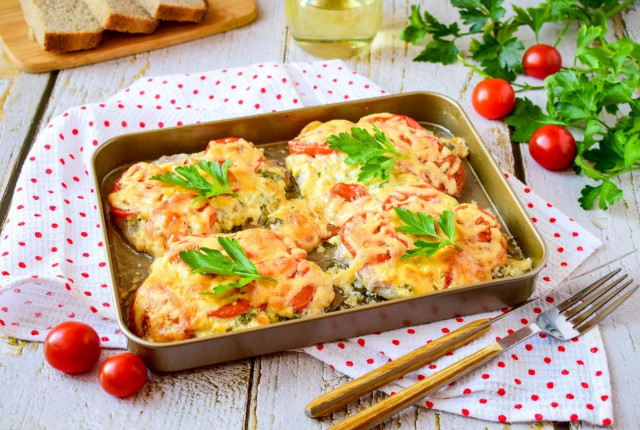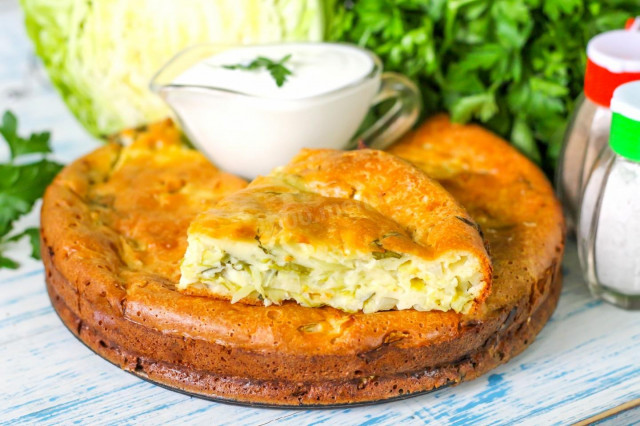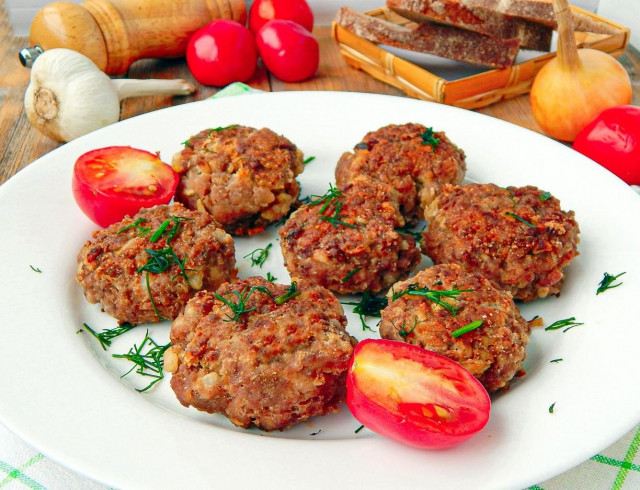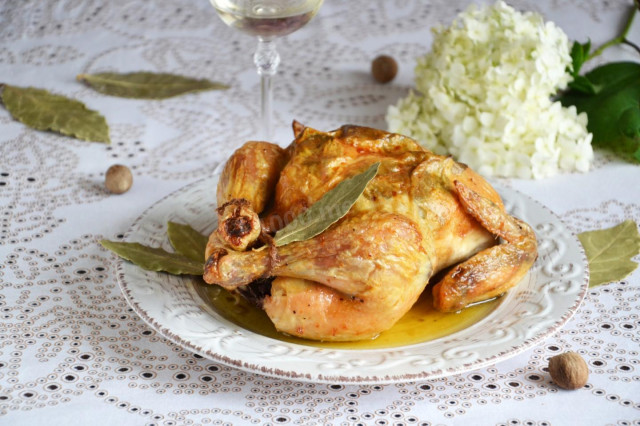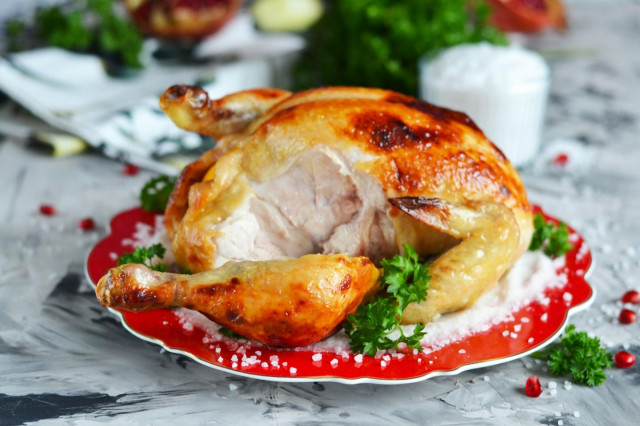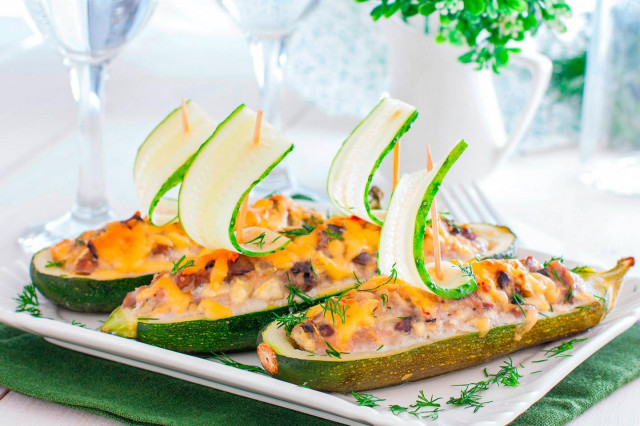Composition / ingredients
Step-by-step cooking
Step 1:
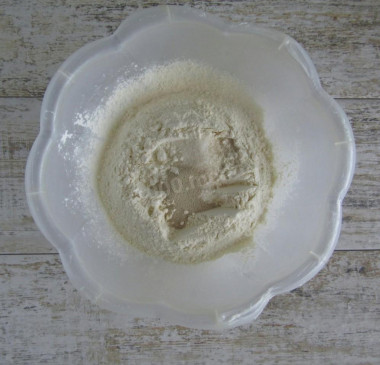
Mix the dry ingredients: sift the flour into a deep bowl through a fine sieve (this will enrich it with oxygen and the baking will turn out more magnificent), add salt, sugar and dry yeast.
Step 2:
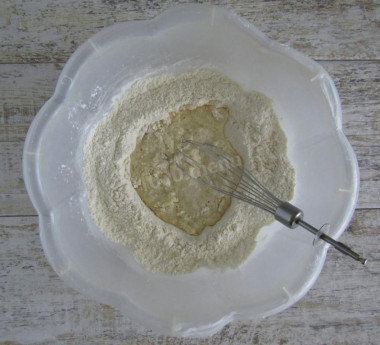
Pour in warm water (the water temperature should not be more than 40 degrees, otherwise the yeast will die and the baking will not rise) and sunflower oil.
Step 3:
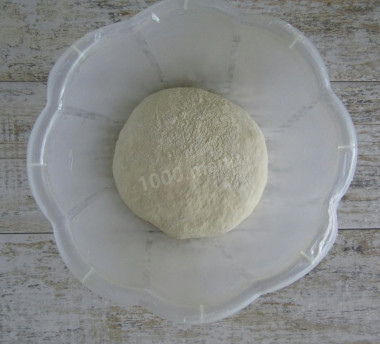
Knead the soft dough (keep in mind that flour comes in different densities and its amount may be slightly more or less). Brush the bowl with vegetable oil and place the dough in it for 30 minutes, covered with a towel or cling film. Leave in a warm place without drafts so that the dough fits well.
Step 4:
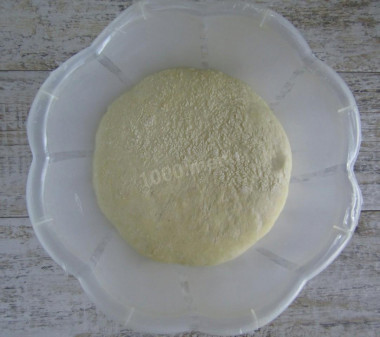
In half an hour, my dough has increased 3 times.
Step 5:
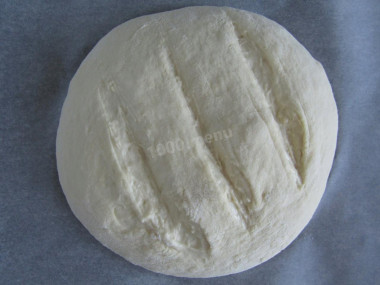
Knead the dough and form a loaf or loaf. From above, you can make incisions with a knife. Leave the bread in a warm place for proofing for another 15-20 minutes. Then sprinkle with milk or water. Preheat the oven to 200 degrees and bake the bread for 20-25 minutes (it may take a little more or less time, be guided by your oven). Bake until the top is golden. My bread was baked for 25 minutes. Cool the bread on the grill.
The liquid in which yeast is bred should be pleasant to the touch, no higher than 40 degrees. Why is this important? In a warm environment, yeast is well activated, in a hot one it will die, and in a cold one it simply will not work. To avoid unpleasant surprises, check the yeast before mixing with the rest of the ingredients. Pour a little warm milk into a bowl, stir in the yeast. Cover the bowl with a kitchen towel and put it in a warm place without drafts for 10-15 minutes. During this time, a foam yeast cap should appear on the surface of the sponge. If this did not happen, then the fermentation process has not started (the yeast is overdue or spoiled). In this case, it is worth taking other yeast, otherwise baking will not work.
Important! Using dry yeast, it should be borne in mind that they occur in two forms: active and instant (read the instructions carefully before use!).
Active dry yeast looks like beads or small balls. Before applying them, they must be brought out of "sleep mode". To do this, the active yeast is diluted in warm sweet water, milk or whey. The resulting bubbles, foam or "cap" indicate that the yeast is ready for further use. Active dry yeast must be brought to complete dissolution in the liquid, otherwise, due to the remaining grains, the dough may not rise and the baking will be spoiled (yeast grains that have not dissolved in the liquid and got into the dough will no longer disperse on their own, which means they will not work).
Instant dry yeast is easier to use. They do not need to be activated before use. Such yeast, along with other ingredients, is simply added to the dough. As a result, the baking time is reduced.
It should also be remembered that both types of dry yeast may differ in their activity from different manufacturers.
For the first time I baked homemade bread, the result pleased both me and my loved ones. The bread turned out delicious and cooking it is not difficult at all, I will definitely bake it again. It is prepared from available ingredients and quite quickly. What is especially pleasing about homemade bread is that I know exactly what it is made from, that it contains only natural ingredients without any harmful additives, there is no extra salt and sugar. Very tasty with butter or jam. Homemade bread remains soft for a long time and does not get stale. I will also experiment with other types of flour - rye and whole grain, you can also add sunflower seeds or pumpkin seeds, so it will be tastier and healthier. I highly recommend trying to bake bread with your own hands according to this recipe! I am sure that you and your loved ones will like it!
Be prepared for the fact that you may need more or less flour than indicated in the recipe. Focus not on the amount of flour, but on the desired consistency of the dough. Read a lot of useful information about flour and its properties in this article!
Keep in mind that everyone's ovens are different. The temperature and cooking time may differ from those specified in the recipe. To make any baked dish successful, use the useful information in this article !
Caloric content of the products possible in the composition of the dish
- Granulated sugar - 398 kcal/100g
- Sugar - 398 kcal/100g
- Vegetable oil - 873 kcal/100g
- Salt - 0 kcal/100g
- Water - 0 kcal/100g
- Wheat flour - 325 kcal/100g
- Dry yeast - 410 kcal/100g

